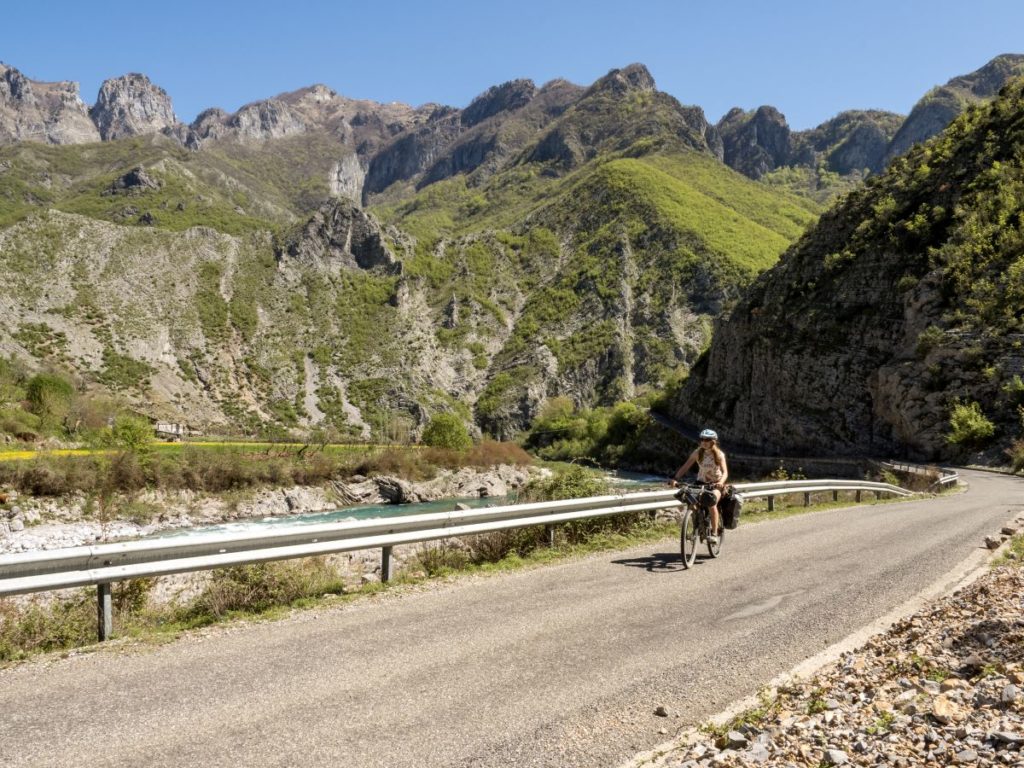Bicycle touring is a great way to explore the outdoors and travel the world. Whether you’re a seasoned cyclist or a beginner, there are certain precautions you should take to ensure that your tour is both enjoyable and safe. In this blog post, I’ll share tips for staying safe on your next bicycle tour, from proper gear to route planning and emergency preparedness.
Visibility is key
When cycling on the road, you should ensure other traffic participants see you. The more visible you are, the more time a driver has to overtake you safely.
In most countries, it is compulsory to have a front and rear reflector and front and rear light.
Another way to increase visibility is by wearing bright clothes or a reflective vest. If it’s rainy and foggy, you need to be extra flashy.
Signal and clearly show your intentions
Signalling with your arm that you will be turning is absolutely unnegotiable. Let people know what you’re up to so that they can react.
If you’re cycling in a group, it’s worth learning the signals used by road cyclists. These simple gestures, signalling that you’re slowing down or there is a pothole, can make your ride much safer and more pleasant.
Make eye contact
Eye contact with other traffic participants is a key to safe cycling. It is a great tool to check if a driver has noticed you before you cross his path. Human brains are hardwired to pay attention to faces and eyes, so the chance they will pay attention to you when you look them in the eyes is much higher.
Limited trust
Even if a driver looks your way, you shouldn’t assume they saw you. Take everything with a grain of salt. You probably know those situations when a car signals right only to take a turn left. To avoid issues, keep a safe distance from all vehicles and expect the unexpected. Limited trust is a good rule of thumb when driving. It also applies to cycling.
Take your space
When cycling on the road, your instinct might be to stick as close to the side as possible. This is a mistake many beginner cyclists make. It’s better to keep some safety margin and take up more space on the road. This way, you can move to the side if a car overtakes you by millimetres.
If you wear a helmet, get a good one
Wearing a helmet while cycling is one of the most disputable safety measures. It is hard to objectively measure its effectiveness because of the different circumstances cyclists might encounter on the road or on the trails.
I won’t try to convince you to wear a helmet, as I think it is a personal choice (apart from a few countries where you’re legally obliged to wear one). Instead, I will feature a few findings that might help you decide about wearing a helmet on your bicycle tour.
- One study showed that helmets can reduce the odds of a head injury by 51 % (and a severe head injury by 69 %). In a computer simulation of a 20 km/h crash, the chances of a major head injury were nearly certain for a cyclist with no helmet and about 9 % with a helmet.
- Some people complain that wearing a helmet in the heat makes them overheat. Actually, a helmet with good ventilation shouldn’t affect your thermal balance.
- There is a danger of compensation. Many cyclists ride riskier and faster, with a helmet giving them a perception of safety.
- Some studies show that helmets alone have only a minor impact on safety or even have a negative impact in countries where cycling is safe.
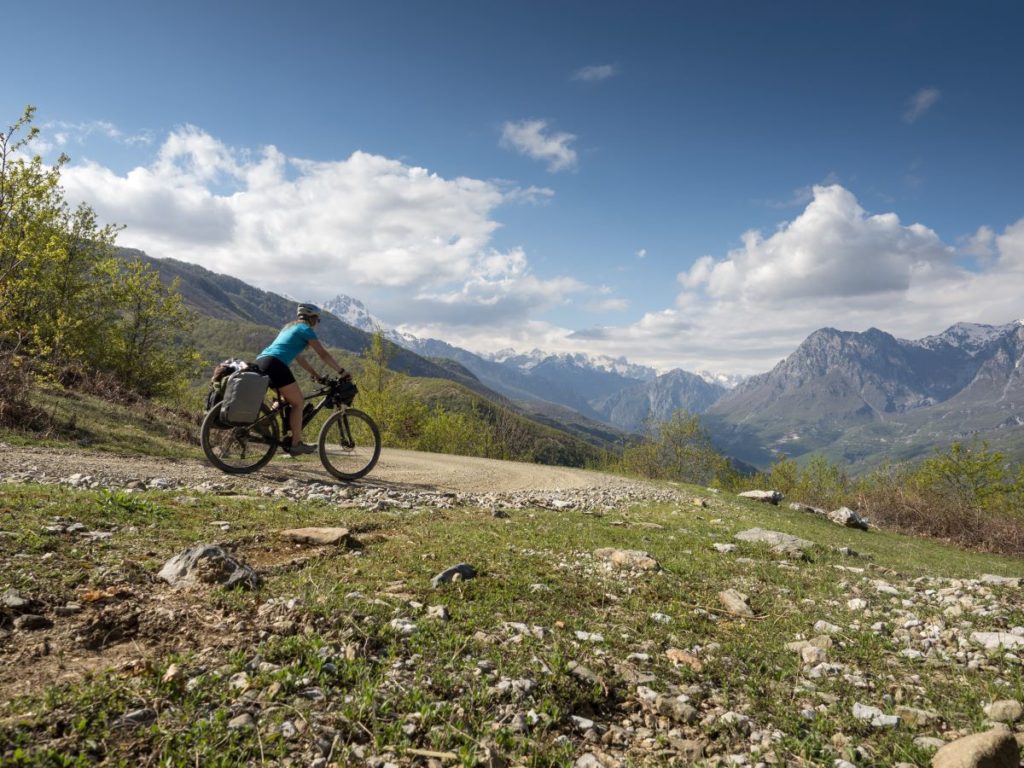
As you can see, there is no consensus on the helmet question. In my opinion, it’s definitely worth having one if you cycle in the mountains, where you develop quite a high speed on the descents.
If you decide to wear a helmet on your bicycle tour, you should invest in a good one. Look for a sticker inside to check if it meets the safety standards in your country. It is also crucial to wear it properly.
Measure the circumference of your head to choose the right helmet size. Then try the helmet on and see if it fits snugly but comfortably. After adjusting the straps and buckles, twist the helmet to the left and right. If the helmet fits properly, the skin on your forehead should move slightly with the helmet.
Check your gear and do regular maintenance
Checking your bike should become a habit to ensure a safe bicycle tour. Pay special attention to your brakes – they are part of your bike that, when faulty, can put you in the greatest danger. If your bike makes funny noise – check if all nuts and bolts are tight.
Before embarking on a bicycle tour, show your bike some love and bring it to a mechanic to ensure everything works smoothly. If you plan a long trip, get a bike maintenance and mechanics course. This way, you won’t be in dire straits if something happens with your bike.
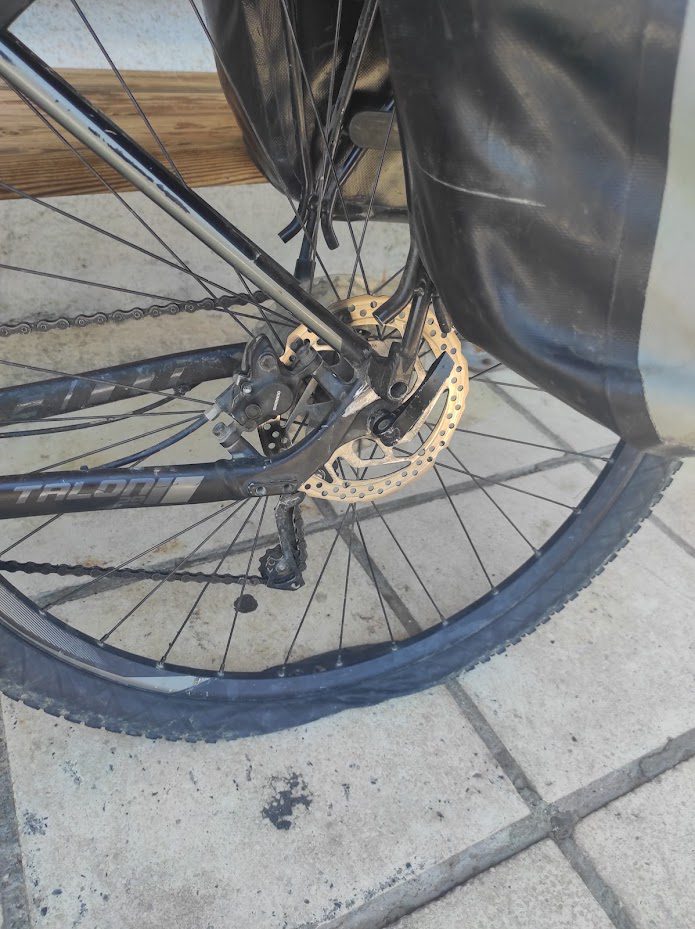
Don’t blindly follow the directions of your navigation app. Although they are getting better at creating safe cycling routes, they sometimes still try to send me to a hazardous highway. Pay attention to road signs, do your research (sometimes just viewing a road in google street view is enough to determine whether or not it’s safe to cycle), and ask locals or other cyclists online for advice.
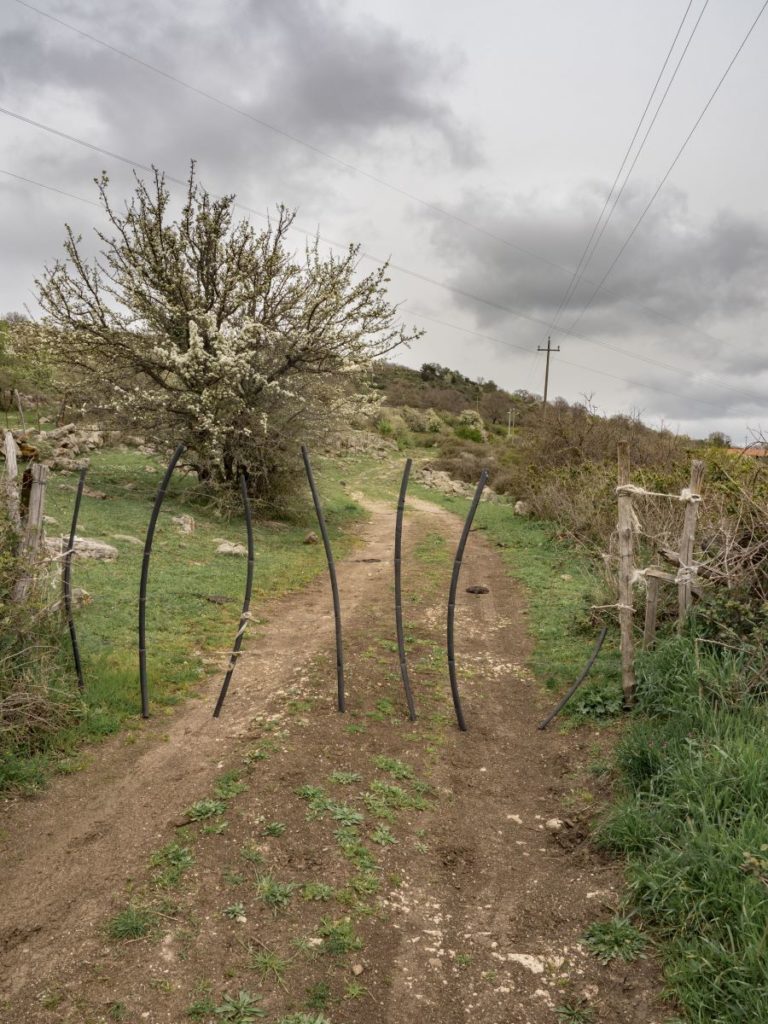
Keep your bike safe when you go sightseeing/hiking/shopping
Bicycle touring is not just about cycling. You do it to travel the world, see something new, and visit exciting places. And not everywhere can you take your bike with you. How to secure your bike when visiting a museum, shopping, or hiking?
When staying in hotels and hostels, the safest bet is to check in and ask at the reception where you can store your bike. Usually, there is a safe place you can put it. To have more peace of mind, you can additionally lock your bike. Voila, you’re free to explore the city or run errands!
Sometimes you want to visit the landmarks on the way, just stopping during the day. How to keep your bike safe and your luggage safe in this case?
- Don’t leave any valuable things in your panniers. Money, documents, electronics – I have a backpack where I put all the important stuff when shopping or sightseeing. Of course, I don’t have enough space to bring in everything, for example, my camping gear, so my strategy is usually to have them on the bottom of the panniers, covered by clothes.
- Ask someone to keep a look at your bike. In many museums or tourist attractions, a security guide or ticket seller will gladly point you to a safe place to store your bicycle and keep an eye on it.
- Have a proper lock and leave your bike only for a short time. Every lock can be destroyed with the right tools, but having a thin cable lock is like sending a note saying “Free bike” to a passing thief.
Stay invisible when wild camping
I have written an entire article about wild camping solo as a woman. Most of these tips concern men too.
My main rule is to stay out of sight. A green tent is a great way to blend in with the landscape. For peace of mind, I lock my bike to a tree (if available) or at least put the chain lock through the wheel and frame (hoping I would hear if anyone tried to move it).
I usually remove all the reflective parts from my bike and try to keep it hidden.
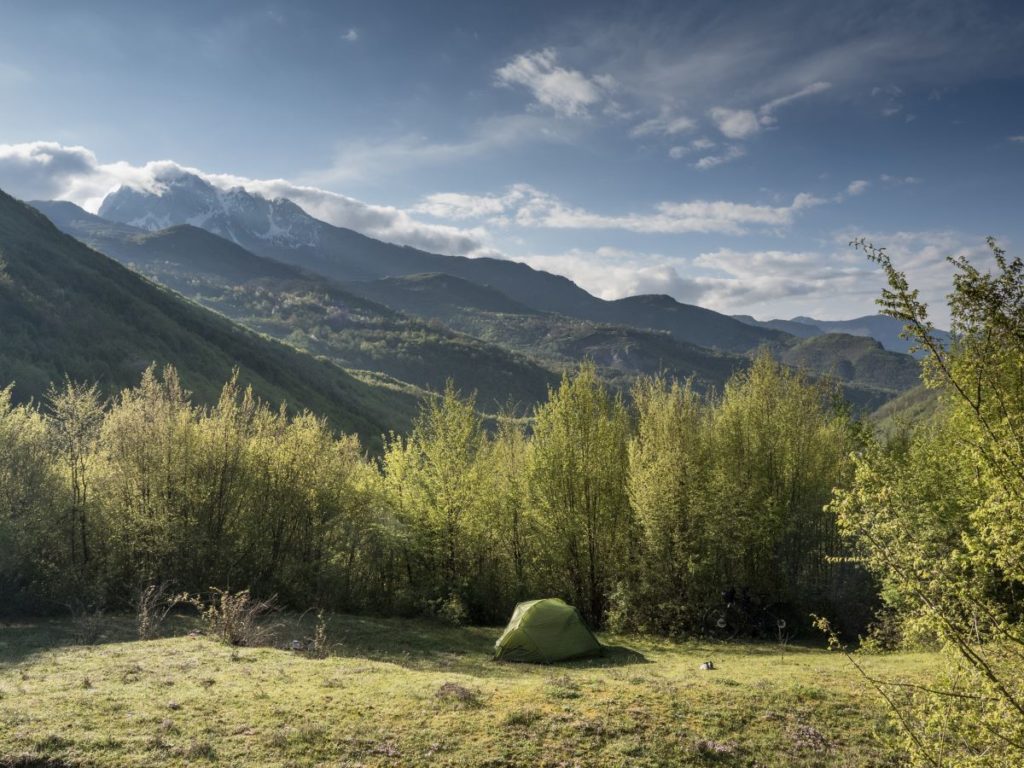
Beware of aggressive dogs
No matter how good your relationship with dogs is, you might meet some angry stray dogs. I know people who almost quit their tour because of unpleasant encounters with canines.
For some reason, dogs dislike cyclists. They chase, bark and sometimes attack. Some basic safety rules should help you avoid aggressive dogs on your bicycle tour.
- Remain calm. It’s easier said than done, especially if you have a dog phobia or had some nasty dog encounters. Some people claim that dogs can smell fear. There is little scientific proof for that, but we know they are sensitive to body language. If you behave like prey, their instinct will tell them to treat you like it.
- In my experience, it usually works when I slow down, calmly talk to the dogs and slowly pass through.
- Usually, the dogs just make some noise but don’t do anything dangerous. But shepherd dogs are another cup of tea. They take their task to protect their herd seriously, as I could experience in the mountains of Grecja i Rumunia.
- If you’re cycling through pastures, be prepared to protect yourself from the dogs.
- There are many ways to deter aggressive dogs. Some people swear by splashing some water on their faces. Others recommend using pepper spray, citronella spray or simply a stick. Dogs have sensitive hearing, so you can use a whistle or ultrasonic deterrents with high pitch sounds.
Do your research
Learn about the places before visiting them. This will help you prepare for eventual dangers you might encounter on the road: what kind of weather to expect, what wild animals you can meet and what cultural norms and laws to follow to avoid getting yourself in trouble.
There are plenty of Facebook groups or WhatsApp group chats for cycling travelling in different parts of the word: they are a great way to get up-to-date information about bicycle touring everywhere.
Bike touring solo? Be extra careful
If you’re cycling solo through remote areas, the only person you can rely on is you. There is no space for reckless behaviours and taking risks. That’s why I always ride conservatively, have enough food and water and double-check everything before I embark on a lonely trail in the mountains.
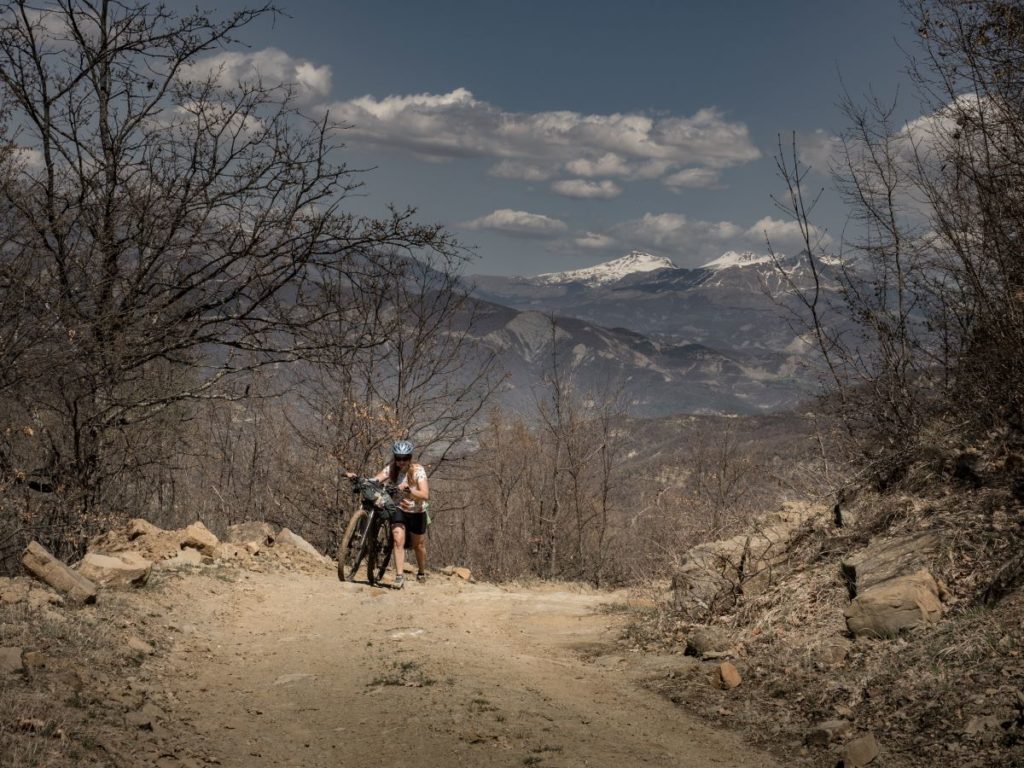
Keep your phone charged and carry a power bank in case you need to make an emergency call.
If you’re super adventurous, you might consider getting a helmet sensor that will send a message with your GPS coordinates to your chosen contacts if you have a crash.
While most people you encounter will be kind and helpful, you should be prepared for dangerous situations like assault. Sign up for a self-defence course, carry pepper spray (and learn how to use it) or bring a personal alarm that will scare an attacker with a high-pitch sound.
Trust your gut. If anything feels fishy about a place – leave.
Get a travel insurance
No matter how fit and healthy you are and how carefully you follow the above rules – shit happens. You might get sick or injured. Good travel insurance will help you avoid additional stress and costs when you need medical treatment.
Do your diligence and check twice if your insurance provider covers bicycle touring. (You can read more about my experiences with insurance for bike touring tutaj).
